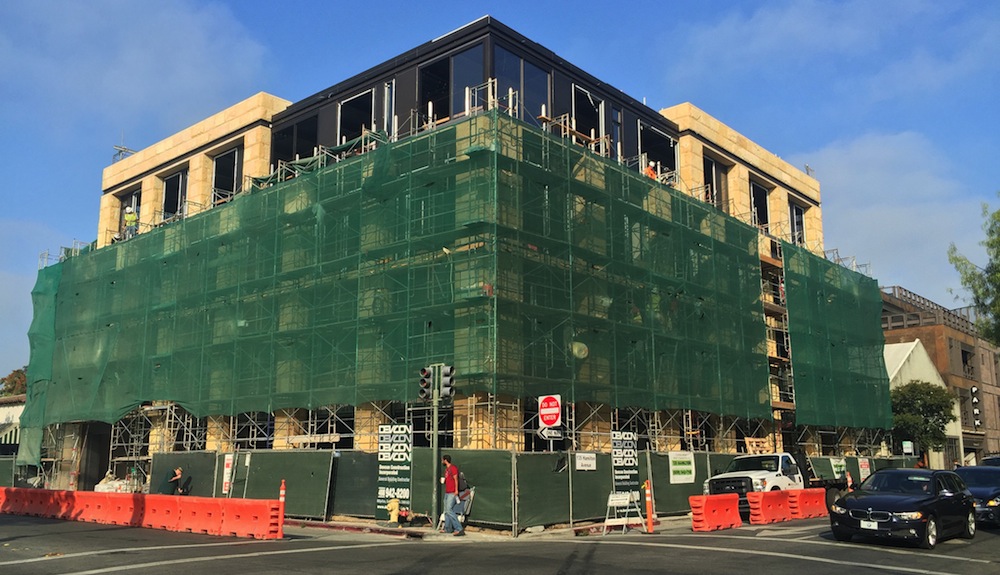Real gross domestic product (GDP) expanded by just 0.7% (seasonally adjusted annual rate) during the fourth quarter of 2015, according to an analysis of Bureau of Economic Analysis data released by Associated Builders and Contractors (ABC). This paltry growth follows a 2% increase during the year's third quarter and a 3.9% increase during the second quarter. For the year, GDP expanded by 2.4%, matching the rate of growth seen in 2014.
Nonresidential fixed investment shrank by 1.8% in the fourth quarter, the first time the segment has contracted since the third quarter of 2012. For the year, nonresidential fixed investment expanded by 2.9% after growing by 6.2% in 2014 and 3% in 2013.
"The economy did not end the year well," ABC Chief Economist Anirban Basu said. "Today's GDP data adds weight to the argument that the U.S. is in a corporate profits recession, an industrial recession, and was experiencing a softening of investments. With the exception of the residential building sector, business capital outlays have declined as corporations deal with a combination of sagging exports, competitive imports, declining energy related investments, rising wage pressures and healthcare costs.
"Recent turbulence in financial markets suggest that capital availability may continue to soften," Basu said. "While residential construction is likely to continue to recover given the combination of low interest rates and accelerating household formation, nonresidential construction spending growth may begin to sputter a bit as those who deploy capital become more defensive. This is not to suggest that nonresidential construction spending is set to decline. Many contractors continue to report significant and growing backlog. However, the current situation suggests that the growth in backlog and ultimately in spending may not be quite as rapid as it was earlier in 2015."
Six key input prices rose or remained unchanged in October on a monthly basis, while one remained unchanged:
- Personal consumption expenditures expanded 2.2% in the fourth quarter after growing by 3% in the third quarter.
- Spending on goods grew 2.4% in the fourth quarter after expanding 5% in the third quarter and 5.5% in the second quarter.
- Real final sales of domestically produced output increased 1.2% for the fourth quarter after a 2.7% increase in the third quarter.
- Federal government spending increased 2.7% in the fourth quarter, the segment's largest increase since the third quarter of 2014.
- Nondefense spending increased 1.4% in the fourth quarter after expanding 2.8% in the previous quarter.
- National defense spending expanded by 3.6% in the fourth quarter after contracting by 1.4% during the third.
- State and local government spending contracted by 0.6% in the fourth quarter after increasing by 2.8% in the third quarter.
Related Stories
Building Team Awards | May 26, 2016
Cimpress office complex built during historically brutal Massachusetts winter
Lean construction techniques were used to build 275 Wyman Street during a winter that brought more than 100 inches of snow to suburban Boston.
Building Team Awards | May 25, 2016
New health center campus provides affordable care for thousands of Northern Californians
The 38,000-sf, two-level John & Susan Sobrato Campus in Palo Alto is expected to serve 25,000 patients a year by the end of the decade.
Building Team Awards | May 24, 2016
Los Angeles bus depot squeezes the most from a tight site
The Building Team for the MTA Division 13 Bus Operations and Maintenance Facility fit 12 acres’ worth of programming in a multi-level structure on a 4.8-acre site.
Building Team Awards | May 23, 2016
'Greenest ballpark' proves a winner for St. Paul Saints
Solar arrays, a public art courtyard, and a picnic-friendly “park within a park" make the 7,210-seat CHS Field the first ballpark to meet Minnesota sustainable building standards.
Building Team Awards | May 19, 2016
Chinatown library unites and serves two emerging Chicago neighborhoods
The 16,000-sf, pebble-shaped Chinatown Branch Library was built at the intersection of new and old Chinatown neighborhoods. The goal is for the building to unite the communities and serve as a catalyst for the developing area.
Building Team Awards | May 19, 2016
NYC subway station lights the way for 300,000 riders a day
Fulton Center, which handles 85% of the riders coming to Lower Manhattan, is like no other station in the city’s vast underground transit web—and that’s a good thing.
Market Data | May 17, 2016
Modest growth for AIA’s Architecture Billings Index in April
The American Institute of Architects reported the April ABI score was 50.6, down from the mark of 51.9 in the previous month. This score still reflects an increase in design services.
Retail Centers | May 10, 2016
5 factors guiding restaurant design
Restaurants are more than just places to eat. They are comprising town centers and playing into the future of brick-and-mortar retail.
AEC Tech | May 9, 2016
Is the nation’s grand tech boom really an innovation funk?
Despite popular belief, the country is not in a great age of technological and digital innovation, at least when compared to the last great innovation era (1870-1970).
Big Data | May 5, 2016
Demand for data integration technologies for buildings is expected to soar over the next decade
A Navigant Research report takes a deeper dive to examine where demand will be strongest by region and building type.

















